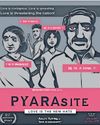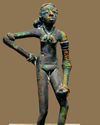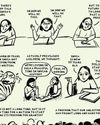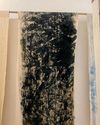
On October 15, two days before the AIADMK’s 53rd founding day, party general secretary Edappadi K. Palaniswami issued a statement to his cadre, expressing his willingness to make “sacrifices for victory”. On October 17, when he walked into the party office at Lloyds Road in Chennai, he had another strong message for his followers. The party, he said, had grown stronger and fared better than its rival, the DMK. But those who have watched him and the party closely know that his fight is more with his former colleagues whom he had expelled from the AIADMK than with the DMK or its president, Chief Minister M.K. Stalin. And, that was evident when he said, “Those who have been expelled from the party will remain expelled. They will not be taken back into the party.”
In the past, AIADMK cadre and supporters have rallied around one powerful leader, beginning with founder M.G. Ramachandran and then J. Jayalalithaa. Palaniswami, however, is struggling to establish his hold over the party. When MGR floated the AIADMK in 1972, the party had no official ideology. But MGR firmly believed in the ideals of Periyar and C.N. Annadurai and that slant showed in the party. Under Palaniswami, though, the party has slowly walked away from those ideals. Once a key regional and national player, it forfeited deposits in seven Lok Sabha constituencies for the first time in the 2024 elections. In many constituencies, it came third, losing out not just to the DMK but also to the BJP-led NDA. The DMK, which fielded its candidates in 22 Lok Sabha seats, polled 47 per cent of the total votes, whereas the AIADMK got only 22.6 per cent in the 34 seats it contested. Even in the western region where the party is considered to be strong, it lost badly. It lost a chunk of its vote share in south Tamil Nadu, too. A majority of the OBC Thevar vote bank, which was always with the AIADMK, saw a shift since Palaniswami took over.
この記事は THE WEEK India の November 17, 2024 版に掲載されています。
7 日間の Magzter GOLD 無料トライアルを開始して、何千もの厳選されたプレミアム ストーリー、9,000 以上の雑誌や新聞にアクセスしてください。
すでに購読者です ? サインイン
この記事は THE WEEK India の November 17, 2024 版に掲載されています。
7 日間の Magzter GOLD 無料トライアルを開始して、何千もの厳選されたプレミアム ストーリー、9,000 以上の雑誌や新聞にアクセスしてください。
すでに購読者です? サインイン

POSTERS OF PROTEST
Appupen is a cartoonist who has published a few graphic novels, the latest being Dream Machine, about how AI can be a great 1 tool for an! authoritarian regime.

CLASH OF THE CIVILISATION
Even as the discovery of the Indus Valley Civilisation completes a century, some key aspects of this ancient culture remain mysterious, including its script. While the controversy over whether it was disrupted by an Aryan invasion may now be discredited, the debate over Indus ancestry and current links continues

A PROVEN PATHWAY TO PEACE
Low-cost, easy to implement, immediate results, and scientifically verified.

FOOTBALL GIVES THEM A KICK
For the children of Manipur and Mizoram, the great game is a way to a prosperous future

BATTLE FOR TOMORROW
Over the past decade, much has been said about India's potential as a leading global power.

THE TONGUE THAT TURNED
Why Greek survived while Latin and Sanskrit declined

USTAD ZAKIR HUSSAIN 1951-2024: HIS MUSIC WAS THERAPY TO THE WORLD
Flautist and Grammy co-winner Rakesh Chaurasia remembers the maestro

The magic of indigo
I really can't imagine why more of us don't throng Goa each December for the Serendipity Arts Festival alone. The festival, in its ninth year now, has the entire Panjim town celebrating.

NEW YEAR.NEW HOPE
EQUITY MARKETS HAVE TURNED VOLATILE OF LATE. WHAT TO EXPECT IN THE NEW YEAR

Seeking middle ground in Middle East
The collapse of assumptions is like the end of the world-or worldview. We assumed conwith the 20th century. But wars in Russia-Ukraine, Gaza, Yemen, Sudan, Somalia and Lebanon prove us wrong. Western defence officials now raise the nuclear threat level.